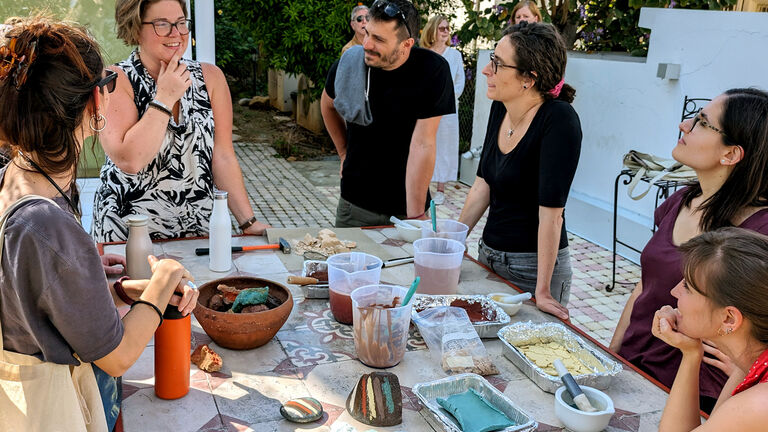
Image courtesy of Elisabeth Haying, photograph by Bruno Suarez Bango
Creativity Around the Globe: Meet Two 2024 Fulbright Scholars
The School of the Art Institute of Chicago (SAIC) is no stranger to Fulbright Fellowships: The School is consistently one of the top producers of Fulbright scholars and students. One of the world’s most prestigious education exchange programs, Fulbright provides scholars with an opportunity to study, teach, and conduct research in more than 140 countries.
In launching their Fulbright projects, SAIC recipients continue to spread creativity around the globe. We caught up with two recent awardees—alum Elisabeth Heying (BFA 2015, MFA 2022) and Professor, Adj. Eia M. Radosavljevic—to learn about their travels, projects, and how the experience evolved their practice.
Elisabeth Heying (BFA 2015, MFA 2022)
Nicosia, Cyprus
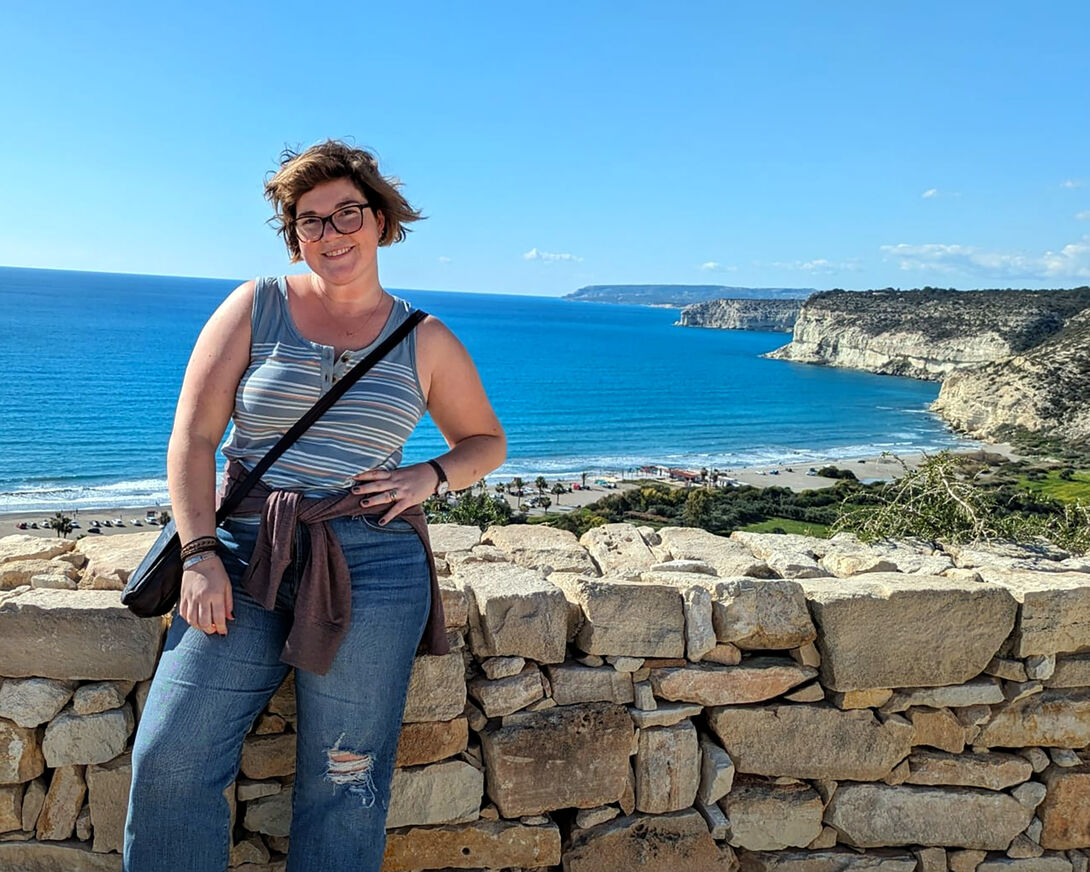
Image courtesy of Elisabeth Heying, photograph by Bruno Suarez Bango
What project did you work on as a Fulbright recipient?
My relationship to painting, pigment, and place is all shaped by one core belief: material has meaning and memory. For my Fulbright project, I built an archive of Cypriot earth pigments and used those pigments to create a body of paintings investigating the revered archaeological sites and abandoned mines on the island, all of which were displayed in a final gallery exhibition titled Fragments & Throughlines. I conducted this project with the support of the Cyprus American Archaeological Research Institute and Museum Lab at CYENS Centre of Excellence & Cyprus University of Technology.
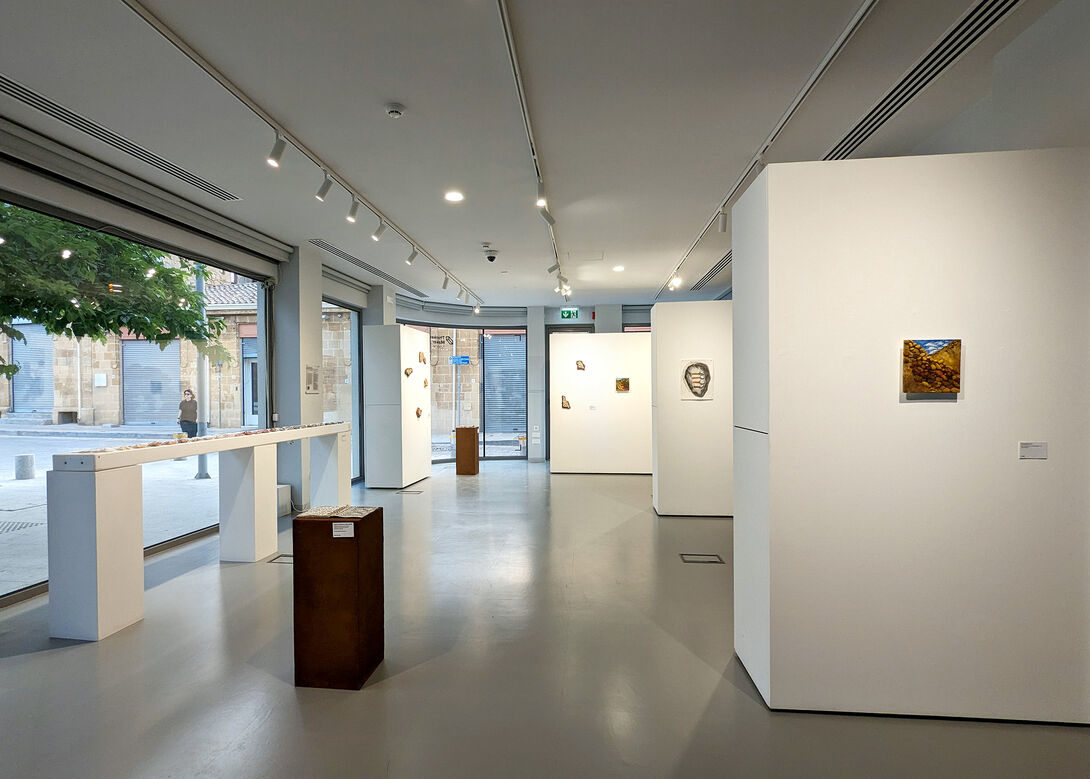
photograph by Elisabeth Heying
How did the experience impact or evolve your practice?
My Fulbright experience brought together all the different pieces of my practice in a really unified way, which felt like a definite evolution to me. Painting, pigment practices, and material research are always a component of what I'm doing, and with this project I was also able to bring in historical, archaeological, and place-based research as well. Being connected with so many amazing designers, archaeologists, and historians through my host institutions was a big part of that.
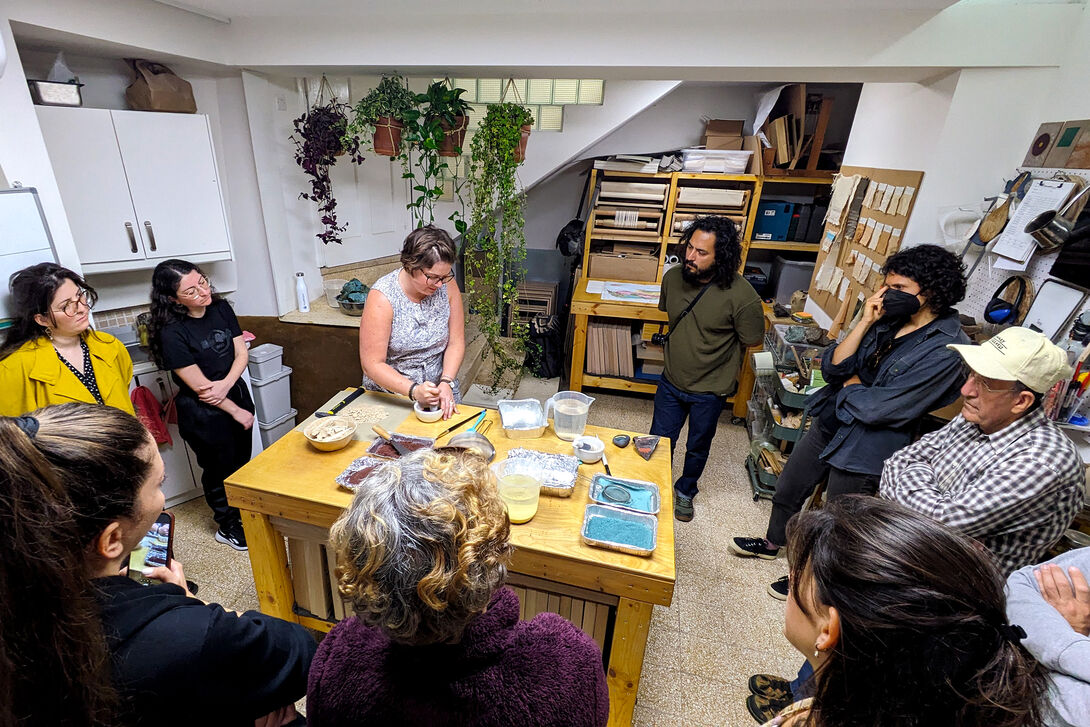
Image courtesy of Elisabeth Heying, photograph by Bruno Suarez Bango
What was one of your favorite places in Cyprus?
I lived in the capital city, Nicosia, during my Fulbright project, and spent lots of time exploring the island. Probably my favorite thing about Cyprus is that the whole country is a day trip away from the Troodos Mountains to the Mediterranean Sea! It's impossible for me to choose my favorite place, especially with how site specific my project was. There's this one particular place called Asprokremmos, an archaeological site that was excavated, then refilled and abandoned. It's completely overgrown by weeds, surrounded by hilly farmland, tucked next to a river. Asprokremmos is the site of an 11,000 year old ochre processing workshop. I loved tracking down and finding this remote little place, exploring the landscape around it, and thinking about the people from so many thousands of years ago that were working with earth pigments in the same ways that I do today.
Professor, Adj. Eia M. Radosavljevic
Tallinn, Estonia
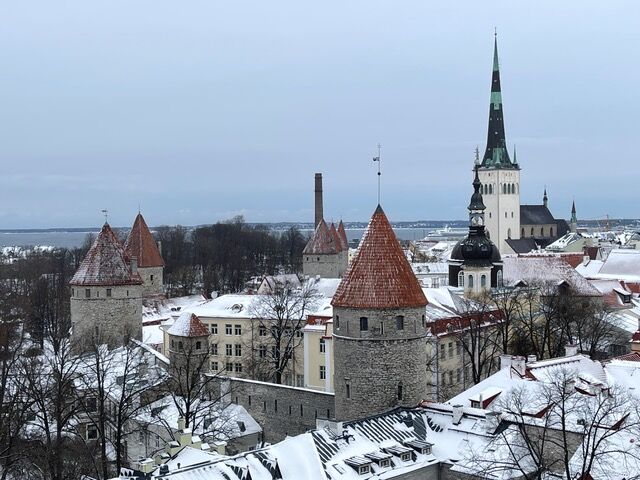
Image courtesy of Eia M. Radosavljevic
What project did you work on as a Fulbright specialist?
My project involved teaching and lecturing at the Estonian Academy of Arts (EAA) where I worked with undergrad and grad students. Our studio focus was couture millinery as sculpture. We began with a visual overview of historical headwear and milliners, and I introduced them to my own recent sculptural work as evidence of the flexibility of the methodologies, beyond limitations of headwear. Students designed and carved headwear forms, reshaped wool felt and woven straw over the forms, and experimented with a variety of couture embellishment techniques. We concluded with a student exhibition of the work created during the program.
As community outreach, the Fulbright Foundation also arranged for me to teach a workshop at the Estonian Museum of Applied Art and Design. The workshop was over-enrolled with eager students new to the medium, as well as professional costumers from the Estonian National Ballet and Opera. At both the Arts Academy and the Design Museum, I was warmly welcomed by energetic and interested participants.
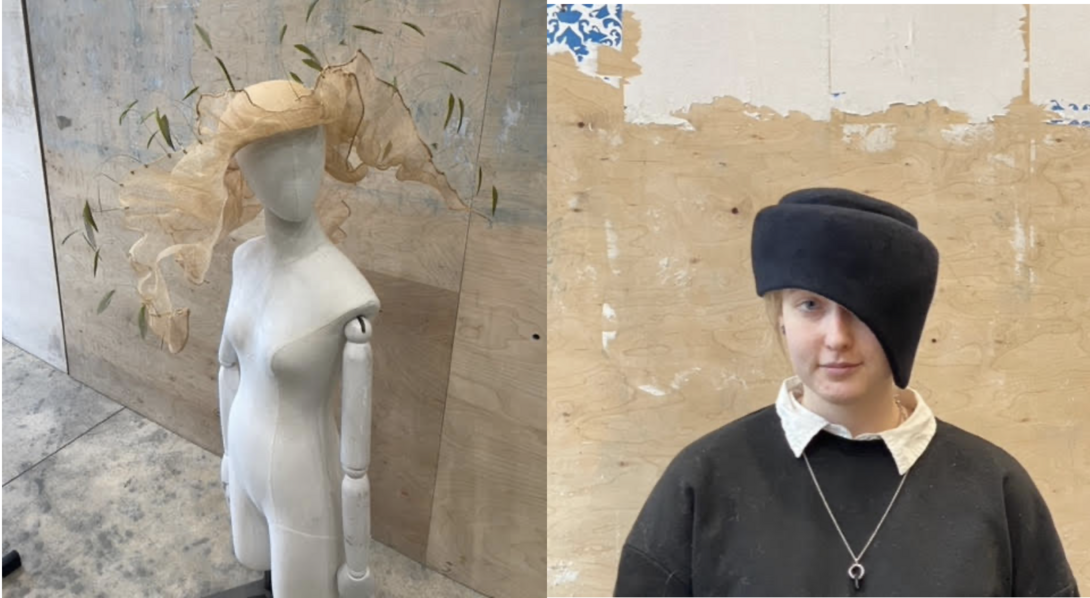
Photos courtesy of Eia M. Radosavljevic
How did the experience impact or evolve your practice?
I would say that the conversations I had with Estonians plus the magical atmosphere of the medieval Old Town of Tallinn are the most impactful aspects of the experience. I cherish the connections made with students, officials from the US Embassy, curators at the Design Museum, graduates from EAA’s PhD program, and the Academic Affairs director from Pallas Art College in Estonia’s “university city” of Tartu. I feel a deep imprint of the many subtle and profound differences between Tallinn and my daily life in Chicago, including the ominous presence of Estonia’s shared border with Russia.
What was one of your favorite places in Estonia?
Estonia’s capital, Tallinn, is a UNESCO World Heritage Site as one of the best-preserved medieval cities in Europe, while also an EU leader in tech startups and electronic voting (since 2005)! Tallinn’s Old Town is like a fairytale. The cobblestone streets around Raekoja Plats with its holiday markets lead to the steep hill of Toompea Castle, the seat of Estonian parliament (and site of a remarkably peaceful confrontation during the four-year Singing Revolution, which restored Estonian independence in 1991 after 50 years of Soviet occupation). Time seems suspended while walking there in pristine snow, not only by the juxtaposition of medieval buildings and high-tech, or the vowel-dense, elvish-sounding Estonian language in the air, but also through a feeling of connection to lived histories that is palpable in all that surrounds.
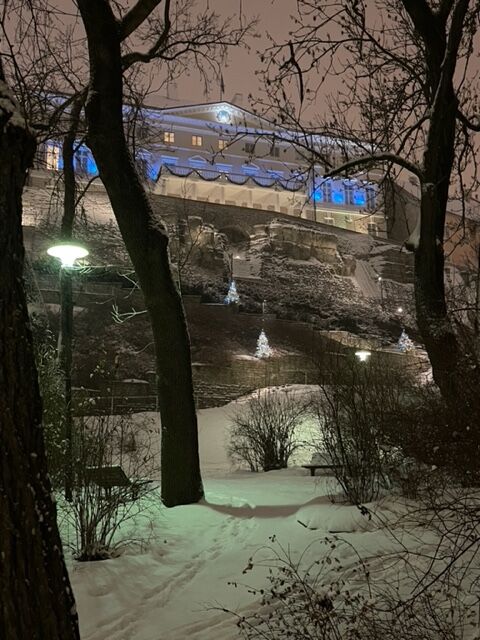
Photos courtesy of Eia Milica Radosavljevic
